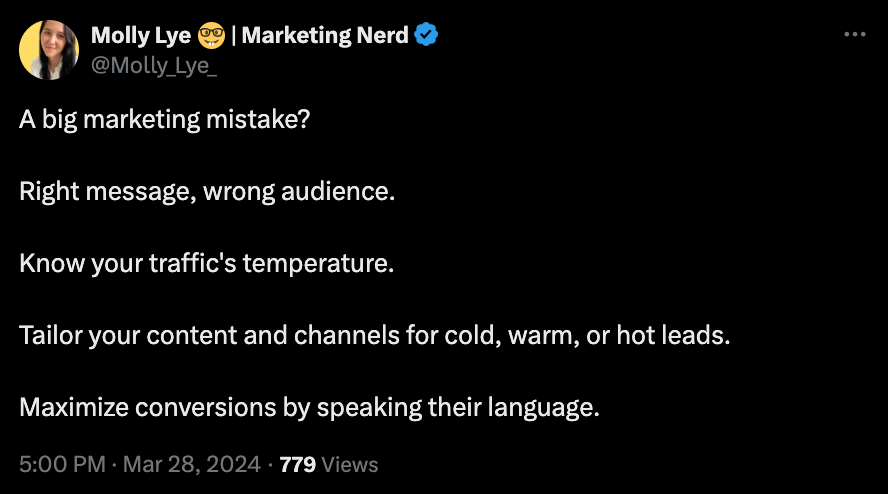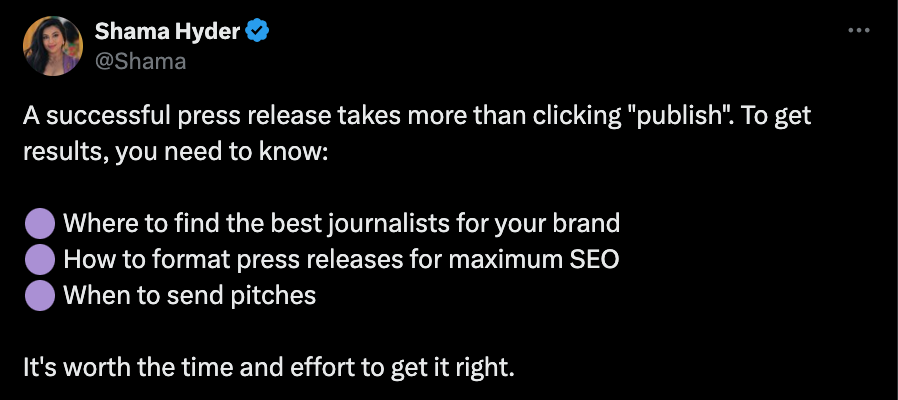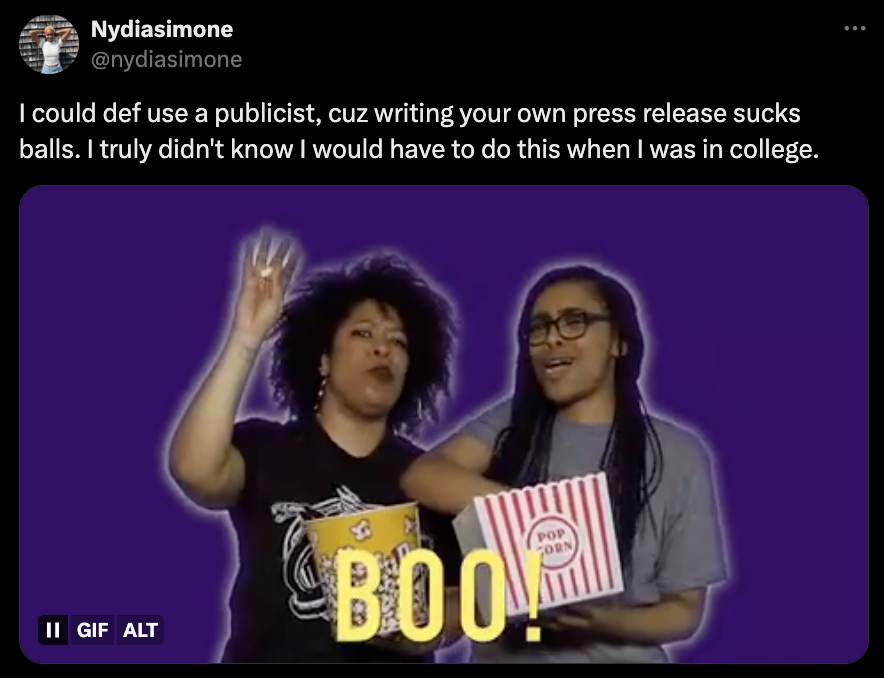Why SEO Press Releases Aren’t as Effective in 2024

Nowadays, many people believe that submitting press releases is outdated.
Are they wrong? Well, not entirely.
Should you forget about this tactic at all, then? Or is it simply a case of doing the right thing the wrong way and getting worse results from it?
Kinda both.
The truth is that the effectiveness of press release submission has changed A LOT in the last decades.
What once gave WOW results can now end up being a complete disaster. Bam! Plus, you will waste time, resources, and effort in the process.
Before you decide to toss this tactic and call it a day, check this out – the right press release placement can boost your brand visibility by up to 68%.
Ha? How is that possible?
Well, you can get even better results if you are lucky enough to get published in some A-list media (everything after “if” is crucial).
But of course, most of the press release opportunities are just useless (let’s leave it as “useless” because I guess we aren’t allowed to swear here).
Alright, now, it sounds complicated. So, how can you send a press release and get decent SEO results?
That’s what you’ll learn today.
Contents
Why Press Releases Might Not Be Efficient for SEO
For many years, press releases were seen as reliable means to boost online presence, reach new audiences, and get that extra social proof.
All this is still valid, especially if you choose a big media name for your publication.
But if you’re using press releases as your main SEO strategy, you might reconsider it. Why?
-
Nofollow links. Well, first of all, when you submit your press release to a newspaper site
or to local media, you mostly get nofollow links.
What are the consequences for you? Right, no link juice for your site.
It is great to have nofollow links to diversify your backlink portfolio. But again, if it’s your main SEO tactic, it just won’t do.
-
Quality of media. When was the last time you were able to submit your press release to a
news site with tons of traffic, good coverage, and huge link juice potential?
Right! Chances are that, for most people, that is yet to happen.
-
Indexing issues. Usually, most people submit press releases to some random websites that
have nothing to do with the real reputable media.
These sites tend to simply have a section called “Press releases” where they would add everything and anything (selling those as a good link).
But in reality, it is nothing more than a blog dump. Predictably, Google treats this as you would expect – it ignores those pages and doesn’t even index them.
So yes, if you are getting publications in Forbes and The New York Times, you can chill. Even if indirectly, you will get great benefits for your SEO.
But if you buy a press release for a couple of dollars, well, you can find better search engine optimization tactics (it’s us being polite here 🙂 ).
Hidden Issues You Can Skip When Submitting a Press Release

Source: @Molly_Lye on X
Look, here is a thing you should understand about press releases – they aren’t created equal. Like, not at all!
If we put it simply, there are 2 types of press releases:
- Quality ones from reputable media
- Shady grady stuff from random sites that have nothing to do with media (initially, created for SEO growth, but now, you get nothing, except for problems)
But beware! There are other unexpected hidden dangers that can crop up, especially for the newbie who hasn’t learned to watch out for them:
-
Shady webmasters. Some webmasters take advantage of unsuspecting people who want to get a
publication.
They place your guest post in the press release section, and everything SEEMS good: the post is published, nofollow or noindex is not added, but the article still does not get indexed.
As a result, the donor site does not lose its weight, but the acceptor (aka you) gets nothing from such a link.
Why isn’t it indexed? Because Google was smart enough to realize that those “press release” sections on random sites have nothing to do with real press releases. So, the algorithms simply discard those pages.
How can you avoid it?
- Always check what section your blog is published in.
- If you submit a press release, only go for real, trustworthy media.
- Another great indicator is whether your publication will appear on the homepage. If it does, chances are that everything is fine. So, ask your webmaster about it.
-
Missing vital details about your target audience. But even when you get the right site,
your homework is not yet done.
Not everyone understands the nuances that make a press release effective.
You have got to know your audience: their hangouts, habits, and how to make your story newsworthy enough to catch their attention.
Even little details, like where to send your content, when to send or publish it, etc., can make a lot of difference in whether people will be willing to read it or not.
-
Wrong talents hiring. Since it takes a lot of work and skills to get a quality press
release and make it work, some people do prefer to hire or outsource the task to someone else.
In fact, for most small businesses, this is sometimes the only way (and often the best way) to submit a press release to legitimate media houses.
Building relationships takes time, and PR firms cost bucks, so this makes sense.
Except, it can also go wrong if you hire a shady agency or services that just don’t have the right network or connection with PR firms. You will just end up wasting money.
But good news for all the press release lovers – it is still a functioning off-page SEO tactic if you do it right. How is that? The next section is your guide into this world.
How to Send a Press Release That Actually Works: 4 Best Tactics

Source: @Shama on X
#0 Before You Start: Choose Your Media Twice (The Most Important Part)
Here is a deal – if you want to take just one idea from all the previous ranting, remember that the only way for your press releases to make any sense is by choosing proper media.
What’s proper? Well, a name that you actually know. Someone credible and trustworthy.
It goes for any use case, whether you want to manage some bad PR, promote a new thing or idea, or just attract some quality links indirectly.
Now, let’s see how to send a press release that gets all the attention it deserves (and maybe a little more).
#1 Find a Newsworthy Angle for Your Story
Can you imagine how many thousands of press releases are being published each day? If you don’t want yours to be lost in the noise, you have to make sure you really have something worthwhile.
People hardly care to read about the next new product another company is launching unless it’s Elon Musk’s next out-of-this-world project. But likely, it isn’t your case.
The point is that your story should have a unique angle: maybe the way your products impact your audience’s life, a partnership with a celebrity or popular person, or a big act of charity, something truly extraordinary that would get the news site interested.
If it’s good enough, you might get to see it picked up by big media houses. What is required from you? Nothing extraordinary.
Choose a unique human angle for your story, and then don’t get surprised if it somehow gets to Google News. This would mean even bigger brand awareness for you.
#2 Go Big or Go Home With a Headline That Grabs Attention
What’s the first thing you would notice? Right, the headline. It then takes a few seconds for readers to decide whether they check out the rest of the story or continue scrolling.
So, your best bet is to choose a headline that creates intrigue and suspense. A little hint of controversy won’t hurt either if it’s tastefully done.
But for the love of all that’s good, avoid cliches and clickbait headlines – nobody likes those.
Also, keep it short and concise; 50 to 60 characters long is enough and much more effective than an endless, rambling headline that makes no sense.
Don’t forget to optimize your headline for search engines too. Your title tag should also be brief (max 60 characters), contain your keyword, and sum up the story without giving away too much.
#3 Throw Your Hardest Points From the Beginning
A press release is hardly the place for waffling or rumbling on about the features of your latest product.
You want to get straight to the point right away. Even better, start off with the best part and most important stuff right away.
Make it easy for journalists and readers to skim and see your main points first.
This is a great time to use the inverted pyramid: key points first, then additional details that explain the key points, and finally, the conclusion.
Fill your message with verifiable information and expert quotes so that it looks authentic.
Maybe try to insert a helpful link that leads people to a place where they get more info about the topic, hopefully, your page (but don’t be greedy – mention other sources as well).
Is the data in your citation (i.e., the boilerplate info where your contact details are included) accurate enough?
Scan the data for discrepancies. It’s best if it is the same as on your Google business profile page, website, etc.
Don’t forget to include quality images, videos, or interactive content that bring your press release to life.
This helps your audience perceive your story better and also boosts engagement. Plus, visuals in press releases translate to better SEO effects.
#4 Know Where to Send and the Best Time to Send Your Press Release

Source: @nydiasimone on X
How do you ensure your message reaches the intended audience? You should identify the right distribution channels.
This requires a lot of research and then some adjustments to meet the relevant requirements for each channel or news site. This involves pitching to as many prospects as possible.
How to send these awesome pitches? Well, emails work. But…
This is usually a very tedious process, so most companies prefer to use a reliable press release service. This can be LinksManagement or any similar alternative.
Professional services understand every nuance and know lots of tricks to craft that perfect press release, like the best day to send it to get the most engagement.
Wondering how much does it cost to use a service like that?
Chances are that you can find an affordable option or package within any budget. At (almost) any rate, you will be saving crazy amounts of time and effort.
Conclusion
The basic game of pushing out as many press releases as possible and waiting for one to work isn’t going to cut it anymore.
Not only do you need to know how to send a press release, you also need to understand what actually goes on behind the scenes when you get someone else to do it for you.
The same principles apply either way. When you craft a human-angle newsworthy brand story that is not overly promotional and choose the proper media, you will get both PR and SEO effects.
And that’s how you crush a press release that ticks those boxes that seemed unattainable before.